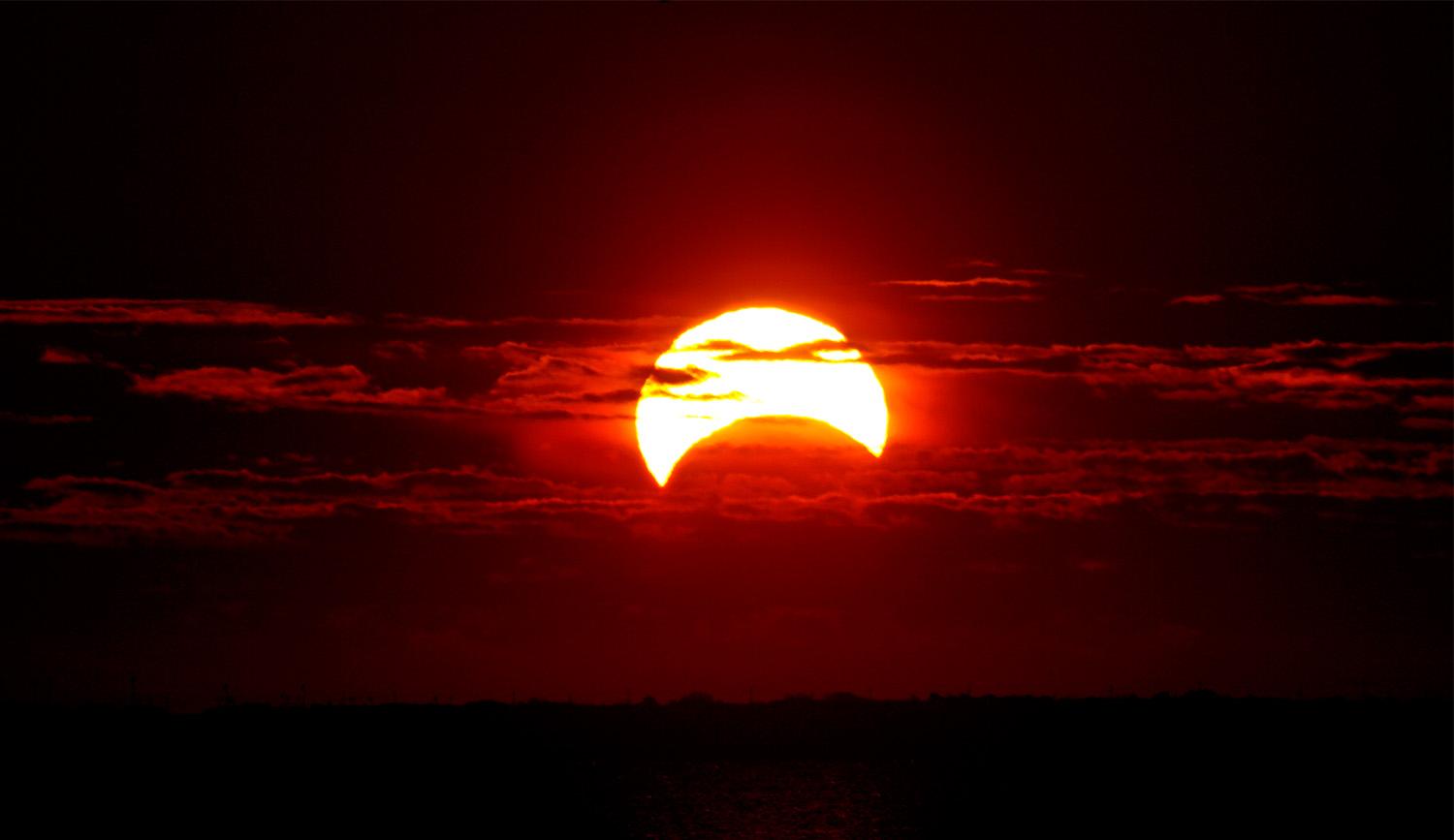
Date:
Often described as the most spectacular astronomical event to be seen from Earth, I recommend that no human should leave the planet without seeing a solar eclipse. Mabel Loomis Todd, an avid eclipse chaser in the 19th century, said this after witnessing the May 28, 1900 total solar eclipse at Tripoli, North Africa:
“I doubt if the effect of witnessing a total eclipse ever quite passes away... A startling nearness to the gigantic forces of nature and their inconceivable operation seems to have been established. Personalities, towns, and cities, and hates and jealousies, and even mundane hopes grow very small and far away.”
- Mabel Loomis Todd, May 28, 1900
Let’s start at the beginning: What is a solar eclipse?
A solar eclipse is an astronomical event observed on Earth during which light from the sun is blocked by the moon. Eclipses are all about the alignment of these three objects, which of them is blocking the sun’s light, and the interesting shadows they create. When the moon lines up directly between the Sun and the Earth, it blocks sunlight from reaching a narrow strip of Earth for a few hours. There’s a time element involved because the earth and the moon are in constant motion. This event is called a total solar eclipse; the sun is ‘eclipsed’ (completely blocked) by the moon. If the moon doesn’t exactly line up in front of the sun, only part of the sun is eclipsed, and the event is a called partial solar eclipse.
Sound complicated? It really isn’t. For the casual observer, it’s just light and shadows.
Try this at home: Stand outside in bright sunlight. Allow your shadow to fall on a nearby person, plant or pet. Your body, blocking light from the sun, creates a shadow, causing a solar eclipse for whatever is in your shadow.
Likewise, the moon, in blocking light from the sun, creates a shadow, causing a solar eclipse for whatever is in its’ shadow. Get it? That’s all an eclipse is! But that’s not to say eclipses aren’t complicated and even fascinating as individual events – in fact, for scientists who study eclipses, they are incredibly complicated, and each solar eclipse has its own signature.
Eclipse Mechanics: Why Don’t Eclipses Happen Every Month?
Solar eclipses are about light and shadows. As the moon passes between the Sun and the Earth, the Moon blocks light from the Sun, creating a shadow that falls onto the Earth. Seems simple enough, doesn’t it? But how can our little Moon block all the light from our gargantuan Sun? And why doesn’t this happen every month?
First, the size. The Sun is 400 times farther away from us than the Moon is. The Sun is also 400 times bigger than the Moon. This situation creates a 1 to 1 ratio of size over distance. Viewed from Earth, the two objects now appear to be the same size. So, when the Moon passes directly between the Sun and a point on Earth, the Moon appears to completely cover the Sun and the Sun is said to be eclipsed by the Moon. If the Moon were smaller or even farther away, there would be no total solar eclipses. In fact, the Moon is slowly orbiting away from Earth. At some point in the Earth’s future, total solar eclipses won’t happen anymore.
Try this at home: Use a soccer ball for the Sun and a tennis ball for the Moon. Now hold the tennis ball directly in front of the soccer ball and adjust the tennis ball’s distance from the soccer ball so that the tennis ball seems to just match the soccer ball’s size. This is exactly what’s happening between the Sun and the Moon as seen by an observer on Earth!
Second, why not every month? If the orbits of the Earth and the Moon were on the same plane, there would be solar and lunar eclipses every month. But the Moon’s orbit has a slight tilt—about 5 degrees from horizontal. This means that only two points of the Moon’s orbit line up directly with the Earth’s orbit every month. If the Moon’s orbit weren’t tilted, we’d have a solar eclipse every month! The tilt of the orbit, the rotation of the Moon’s orbit, and the Earth-Moon system’s revolution around the Sun limit the number of solar eclipses to just two or three per year. Add in a few other orbital variations and solar eclipses in specific locations become very rare. The last total solar eclipse in Philadelphia: July 29, 1478. The next? May 1, 2079!
Einstein and the 1919 Solar Eclipse
In 1915, physicist Albert Einstein proposed a new, more comprehensive understanding of how the universe works. He called his new idea the theory of General Relativity. Einstein’s newest theory suggested that space and time are knitted together throughout the universe as a sort of invisible "fabric" that is distorted—dimpled—by massive objects. Einstein named the fabric "space-time" and re-defined gravity as how we feel and interpret the distortion of space-time caused by massive objects. The motion of the planets around the Sun, for example, is caused by the Sun’s mass distorting the surrounding space-time field into the shape of a well.
But what does Einstein’s theory of General Relativity have to do with eclipses?
In 1919, British astronomer Arthur Eddington understood that the curvature of space-time should also bend light rays, so he figured that a good test of the theory would be to use the curved space-time field around the Sun to bend light from a star cluster positioned just behind the sun. To see that cluster just next to the sun, the adjacent sky would need to be dark. Eddington used the darkened sky of the May 29, 1919 total solar eclipse at the island of Principe, just off the coast of West Africa, to see the cluster. His measurements of the cluster’s position were close enough to Einstein’s predictions to confirm the theory of General Relativity and catapult Einstein to international stardom. Since then, tests of Einstein’s predictions carried out during total solar eclipses have continually confirmed the validity of his theory and existence of the space-time continuum.
Best wishes for clear weather and a great eclipse!
Try This At Home
A Solar Observing Activity
Four people each grab a bed sheet at the corners and pull until the sheet is tightly stretched. Now a fifth person places a heavy ball (at least a basketball, but lighter than a bowling ball) on the sheet.
As the ball rolls to the middle of the sheet it distorts the surface as it moves. That distortion of the sheet as it rolls is much like how space-time is distorted by massive objects, like stars.
Use a smaller ball to try making an orbit around the bigger ball. The motion of the smaller ball is determined by the distortion caused by the bigger ball. It’s the distortion of space-time in a bed sheet!



